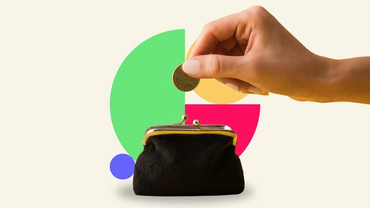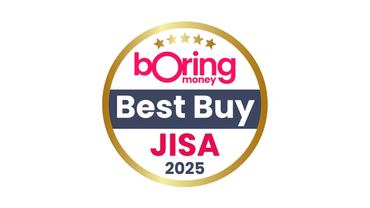Junior ISAs Explained: A Complete Guide to Saving for Your Child's Future
The basics of Junior ISAs
What is a Junior ISA?
A Junior ISA (also known as a JISA) is a tax-free savings accounts which allows you to build up a nest egg for the kids without worrying about keeping the taxman's mittens off their money.
You can open a Junior ISA for each of your children under the age of 18 and can put in up to £9,000 every single year without paying a penny of tax. They come in Cash and Stocks & Shares varieties so you can choose which type suits your (and your kids') needs best. Plus, anyone can pay into a JISA until your child’s 18th birthday, at which point your little one (or not-so-little one anymore!) gets their hands on the money.
Note though that you can't open a JISA if you already have a Child Trust Fund, and though your kids can only access their funds once they turn 18, they can control the account from the age of 16.
How do Junior ISAs work?
There are 2 different types of Junior ISA that you can open on behalf of your kids: the Cash JISA and the Stocks & Shares JISA. Though the tax breaks and annual allowances are pretty much the same, the way your money is stored is a bit different. Let's discuss.
What is a Cash JISA?
A Cash JISA is a Junior ISA where the money in the account is held in cash, rather than invested in the stock market. As you're not buying shares in lots of different companies, this usually means there's less risk involved. But it's important to remember that cash isn't immune to inflation, so you're not completely invincible with a Cash JISA either.
It'd be hard to miss the headlines about the cost of living crisis at the moment, and with inflation soaring to levels some of us haven't seen since the '70s, cash is actually losing its purchasing power. What this means is that the same £9,000 you put into a Cash JISA this year might not be able to buy you as many things in a few years' time, as inflation has eaten away at its value.
However, Cash Junior ISAs are popular with families that aren't so keen on the idea of putting money intended for the kids into the stock market, where the value of the underlying investments can yo-yo at any given time. Cash is widely considered a safer and steadier asset, so if you're not comfortable with investing on your kids' behalf then a Cash JISA is probably best for you.
What is a Stocks & Shares JISA?
A Stocks & Shares JISA is similar to a Cash JISA, but instead of your kids' savings sitting idly in cash, it's invested in the stock market - in things like shares and funds - in an attempt to grow their money and earn a profit.
In the same way as you can with a regular Stocks & Shares ISA, you can choose how you want to invest for your kids, picking your preferred provider as well as the individual assets you're investing - so it's customisable. For example's sake, let's say you'd like to invest for your children but you're not so sure about the idea of taking on too much risk (it's their money after all, they just don't get it until they're 18). You might opt for a low-risk selection of investments to minimise the chances that your kids' money will fall in value.
There are loads of Junior ISA providers on the market which allow you to pick from a pre-made selection of investments according to the level of risk you're comfortable with, and these ready-made portfolios make a great addition to a Stocks & Shares JISA. Alternatively, you can get straight to the point and pick whichever individual funds or shares you want by yourself. Shop around and see which providers have what you're looking for.
Is a Junior ISA right for me?
Not sure if a Junior ISA is the right choice for your family? It can be stressful trying to decide which financial products you need for yourself, let alone for your kids! Have a browse of the pros and cons of JISAs in the table below to work out if they're right for you.
How much can I save with a Junior ISA?
You can save up to £9,000 into a Junior ISA per tax year, and these contributions can come from anyone, such as your kids' grandparents or bigger cousins. They don't take much to set up either. If you can spare £25-£50 a month, or have a lump sum of about £500 to hand, you can set up a Junior ISA with most major providers on the market. Some providers will let you set one up with as little as a single £1!
The key here is to shop around, paying attention to minimum deposits and minimum monthly contributions, to see which JISAs are most sensible for your circumstances. You'll also want to check the fees and charges as these can differ vastly from provider to provider, and if you're opening Junior ISAs for multiple children, those could add up to a considerable amount before you even know it!
Head over to our JISA compare tables to browse the market and get a sense of which provider is right for you. Read ours - and our readers' - reviews, compare monthly and annual charges, and see which have won our coveted 'Best Buy JISA' awards!
What happens to a Junior ISA when my child turns 18?
JISAs can be a great way to give the rugrats a dollop of cash for a house deposit, a car, or to fund their education. However, you need to be aware that you can’t control what they do with it. All the money you put in is locked away until your child’s 18th birthday. At that point, it becomes their money and they are free to do whatever they like with it. Plus, from the age of 16, your kids can actually control their own Junior ISAs - meaning they reserve the right to go in and change the underlying investments in it, if they so wished.
If you’ve got a responsible one, you might be lucky and they’ll leave it be and use it for their university fees. If you haven’t, maybe don’t tell them it’s there and then surprise them with it on their 18th birthday - when their Junior ISA will roll over into a normal adult ISA. Alternatively, use their JISA to teach them about money - saving, compound interest and the like - and it can be a powerful tool to encourage healthy money habits in your little ones.
Hargreaves Lansdown is the biggest provider of Stocks & Shares JISAs in the UK, and their data suggests our kids are pretty sensible – 97% of their JISAs transfer to adult ISAs and see no withdrawals in the first 12 months. And almost a third pay in more after that. When did kids get so sensible?
Can I move a Child Trust Fund to a Junior ISA?
Child Trust Funds (CTFs) are a type of saving account that were previously available for kids born between 1 September 2002 and 2 January 2011. Parents could use them to deposit free cash vouchers of up to £250 (or up to £500 if they were on a low income) that used to be handed out twice to each child by the government. But as they're now defunct, the question is... should you move it to the new kid on the block, the Junior ISA?
There’s no way to say this nicely: this is a bugger’s muddle. Many providers will not accept a transfer of Child Trust Funds into Junior ISAs. You can sometimes move from a Child Trust Fund to a Junior ISA with your original provider, though this can - and often will - incur fees. However, it's a bit trickier if you want to switch to another provider entirely, and you'll likely have to switch to a JISA with your original provider first before changing to the next one. AJ Bell and Hargreaves Lansdown are quite good on the admin here so it may be worth giving them a call to check if they could support a CTF transfer into a JISA with them.
Before moving, do contact your current provider and ask them about all exit fees. That’s the first step. And, if you've lost track of where your child’s Trust Fund is, you can search on the government’s website here.
Find the right Junior ISA provider
Looking to open a Junior ISA for your kids? Not sure who to turn to? That's precisely where we come in. Head on over to our JISA compare tables to see which providers get our - and our readers' - seal of approval, on everything from fees to customer service. Click the link below to dig in!



